Rui Dai
A Task-Driven, Planner-in-the-Loop Computational Design Framework for Modular Manipulators
Dec 18, 2025Abstract:Modular manipulators composed of pre-manufactured and interchangeable modules offer high adaptability across diverse tasks. However, their deployment requires generating feasible motions while jointly optimizing morphology and mounted pose under kinematic, dynamic, and physical constraints. Moreover, traditional single-branch designs often extend reach by increasing link length, which can easily violate torque limits at the base joint. To address these challenges, we propose a unified task-driven computational framework that integrates trajectory planning across varying morphologies with the co-optimization of morphology and mounted pose. Within this framework, a hierarchical model predictive control (HMPC) strategy is developed to enable motion planning for both redundant and non-redundant manipulators. For design optimization, the CMA-ES is employed to efficiently explore a hybrid search space consisting of discrete morphology configurations and continuous mounted poses. Meanwhile, a virtual module abstraction is introduced to enable bi-branch morphologies, allowing an auxiliary branch to offload torque from the primary branch and extend the achievable workspace without increasing the capacity of individual joint modules. Extensive simulations and hardware experiments on polishing, drilling, and pick-and-place tasks demonstrate the effectiveness of the proposed framework. The results show that: 1) the framework can generate multiple feasible designs that satisfy kinematic and dynamic constraints while avoiding environmental collisions for given tasks; 2) flexible design objectives, such as maximizing manipulability, minimizing joint effort, or reducing the number of modules, can be achieved by customizing the cost functions; and 3) a bi-branch morphology capable of operating in a large workspace can be realized without requiring more powerful basic modules.
Safe Learning for Contact-Rich Robot Tasks: A Survey from Classical Learning-Based Methods to Safe Foundation Models
Dec 10, 2025Abstract:Contact-rich tasks pose significant challenges for robotic systems due to inherent uncertainty, complex dynamics, and the high risk of damage during interaction. Recent advances in learning-based control have shown great potential in enabling robots to acquire and generalize complex manipulation skills in such environments, but ensuring safety, both during exploration and execution, remains a critical bottleneck for reliable real-world deployment. This survey provides a comprehensive overview of safe learning-based methods for robot contact-rich tasks. We categorize existing approaches into two main domains: safe exploration and safe execution. We review key techniques, including constrained reinforcement learning, risk-sensitive optimization, uncertainty-aware modeling, control barrier functions, and model predictive safety shields, and highlight how these methods incorporate prior knowledge, task structure, and online adaptation to balance safety and efficiency. A particular emphasis of this survey is on how these safe learning principles extend to and interact with emerging robotic foundation models, especially vision-language models (VLMs) and vision-language-action models (VLAs), which unify perception, language, and control for contact-rich manipulation. We discuss both the new safety opportunities enabled by VLM/VLA-based methods, such as language-level specification of constraints and multimodal grounding of safety signals, and the amplified risks and evaluation challenges they introduce. Finally, we outline current limitations and promising future directions toward deploying reliable, safety-aligned, and foundation-model-enabled robots in complex contact-rich environments. More details and materials are available at our \href{ https://github.com/jack-sherman01/Awesome-Learning4Safe-Contact-rich-tasks}{Project GitHub Repository}.
INTENTION: Inferring Tendencies of Humanoid Robot Motion Through Interactive Intuition and Grounded VLM
Aug 06, 2025Abstract:Traditional control and planning for robotic manipulation heavily rely on precise physical models and predefined action sequences. While effective in structured environments, such approaches often fail in real-world scenarios due to modeling inaccuracies and struggle to generalize to novel tasks. In contrast, humans intuitively interact with their surroundings, demonstrating remarkable adaptability, making efficient decisions through implicit physical understanding. In this work, we propose INTENTION, a novel framework enabling robots with learned interactive intuition and autonomous manipulation in diverse scenarios, by integrating Vision-Language Models (VLMs) based scene reasoning with interaction-driven memory. We introduce Memory Graph to record scenes from previous task interactions which embodies human-like understanding and decision-making about different tasks in real world. Meanwhile, we design an Intuitive Perceptor that extracts physical relations and affordances from visual scenes. Together, these components empower robots to infer appropriate interaction behaviors in new scenes without relying on repetitive instructions. Videos: https://robo-intention.github.io
Effective Probabilistic Time Series Forecasting with Fourier Adaptive Noise-Separated Diffusion
May 16, 2025Abstract:We propose the Fourier Adaptive Lite Diffusion Architecture (FALDA), a novel probabilistic framework for time series forecasting. First, we introduce the Diffusion Model for Residual Regression (DMRR) framework, which unifies diffusion-based probabilistic regression methods. Within this framework, FALDA leverages Fourier-based decomposition to incorporate a component-specific architecture, enabling tailored modeling of individual temporal components. A conditional diffusion model is utilized to estimate the future noise term, while our proposed lightweight denoiser, DEMA (Decomposition MLP with AdaLN), conditions on the historical noise term to enhance denoising performance. Through mathematical analysis and empirical validation, we demonstrate that FALDA effectively reduces epistemic uncertainty, allowing probabilistic learning to primarily focus on aleatoric uncertainty. Experiments on six real-world benchmarks demonstrate that FALDA consistently outperforms existing probabilistic forecasting approaches across most datasets for long-term time series forecasting while achieving enhanced computational efficiency without compromising accuracy. Notably, FALDA also achieves superior overall performance compared to state-of-the-art (SOTA) point forecasting approaches, with improvements of up to 9%.
Leveraging Submodule Linearity Enhances Task Arithmetic Performance in LLMs
Apr 15, 2025



Abstract:Task arithmetic is a straightforward yet highly effective strategy for model merging, enabling the resultant model to exhibit multi-task capabilities. Recent research indicates that models demonstrating linearity enhance the performance of task arithmetic. In contrast to existing methods that rely on the global linearization of the model, we argue that this linearity already exists within the model's submodules. In particular, we present a statistical analysis and show that submodules (e.g., layers, self-attentions, and MLPs) exhibit significantly higher linearity than the overall model. Based on these findings, we propose an innovative model merging strategy that independently merges these submodules. Especially, we derive a closed-form solution for optimal merging weights grounded in the linear properties of these submodules. Experimental results demonstrate that our method consistently outperforms the standard task arithmetic approach and other established baselines across different model scales and various tasks. This result highlights the benefits of leveraging the linearity of submodules and provides a new perspective for exploring solutions for effective and practical multi-task model merging.
Loose Social-Interaction Recognition in Real-world Therapy Scenarios
Sep 30, 2024



Abstract:The computer vision community has explored dyadic interactions for atomic actions such as pushing, carrying-object, etc. However, with the advancement in deep learning models, there is a need to explore more complex dyadic situations such as loose interactions. These are interactions where two people perform certain atomic activities to complete a global action irrespective of temporal synchronisation and physical engagement, like cooking-together for example. Analysing these types of dyadic-interactions has several useful applications in the medical domain for social-skills development and mental health diagnosis. To achieve this, we propose a novel dual-path architecture to capture the loose interaction between two individuals. Our model learns global abstract features from each stream via a CNNs backbone and fuses them using a new Global-Layer-Attention module based on a cross-attention strategy. We evaluate our model on real-world autism diagnoses such as our Loose-Interaction dataset, and the publicly available Autism dataset for loose interactions. Our network achieves baseline results on the Loose-Interaction and SOTA results on the Autism datasets. Moreover, we study different social interactions by experimenting on a publicly available dataset i.e. NTU-RGB+D (interactive classes from both NTU-60 and NTU-120). We have found that different interactions require different network designs. We also compare a slightly different version of our method by incorporating time information to address tight interactions achieving SOTA results.
RoboNurse-VLA: Robotic Scrub Nurse System based on Vision-Language-Action Model
Sep 29, 2024



Abstract:In modern healthcare, the demand for autonomous robotic assistants has grown significantly, particularly in the operating room, where surgical tasks require precision and reliability. Robotic scrub nurses have emerged as a promising solution to improve efficiency and reduce human error during surgery. However, challenges remain in terms of accurately grasping and handing over surgical instruments, especially when dealing with complex or difficult objects in dynamic environments. In this work, we introduce a novel robotic scrub nurse system, RoboNurse-VLA, built on a Vision-Language-Action (VLA) model by integrating the Segment Anything Model 2 (SAM 2) and the Llama 2 language model. The proposed RoboNurse-VLA system enables highly precise grasping and handover of surgical instruments in real-time based on voice commands from the surgeon. Leveraging state-of-the-art vision and language models, the system can address key challenges for object detection, pose optimization, and the handling of complex and difficult-to-grasp instruments. Through extensive evaluations, RoboNurse-VLA demonstrates superior performance compared to existing models, achieving high success rates in surgical instrument handovers, even with unseen tools and challenging items. This work presents a significant step forward in autonomous surgical assistance, showcasing the potential of integrating VLA models for real-world medical applications. More details can be found at https://robonurse-vla.github.io.
HYPERmotion: Learning Hybrid Behavior Planning for Autonomous Loco-manipulation
Jun 20, 2024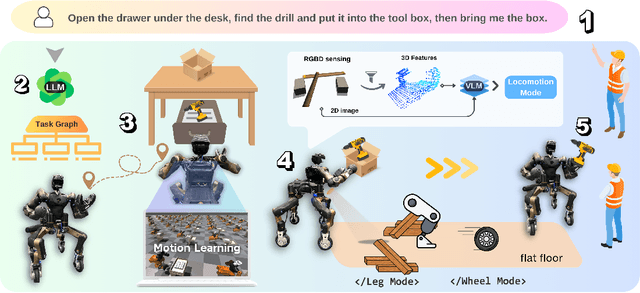
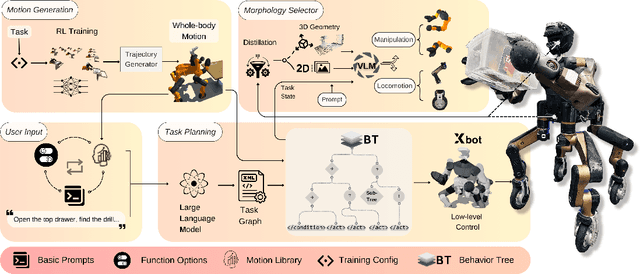
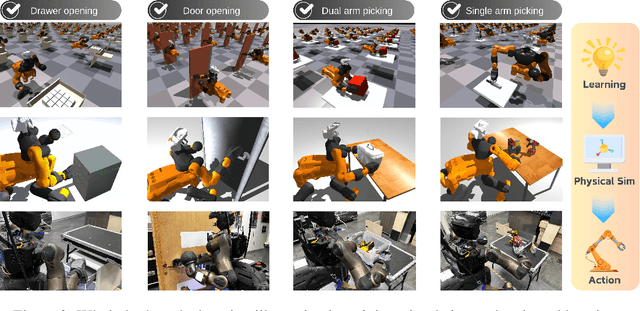
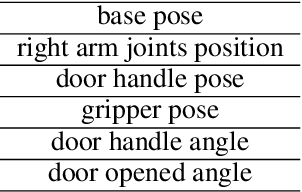
Abstract:Enabling robots to autonomously perform hybrid motions in diverse environments can be beneficial for long-horizon tasks such as material handling, household chores, and work assistance. This requires extensive exploitation of intrinsic motion capabilities, extraction of affordances from rich environmental information, and planning of physical interaction behaviors. Despite recent progress has demonstrated impressive humanoid whole-body control abilities, they struggle to achieve versatility and adaptability for new tasks. In this work, we propose HYPERmotion, a framework that learns, selects and plans behaviors based on tasks in different scenarios. We combine reinforcement learning with whole-body optimization to generate motion for 38 actuated joints and create a motion library to store the learned skills. We apply the planning and reasoning features of the large language models (LLMs) to complex loco-manipulation tasks, constructing a hierarchical task graph that comprises a series of primitive behaviors to bridge lower-level execution with higher-level planning. By leveraging the interaction of distilled spatial geometry and 2D observation with a visual language model (VLM) to ground knowledge into a robotic morphology selector to choose appropriate actions in single- or dual-arm, legged or wheeled locomotion. Experiments in simulation and real-world show that learned motions can efficiently adapt to new tasks, demonstrating high autonomy from free-text commands in unstructured scenes. Videos and website: hy-motion.github.io/
JOADAA: joint online action detection and action anticipation
Sep 12, 2023
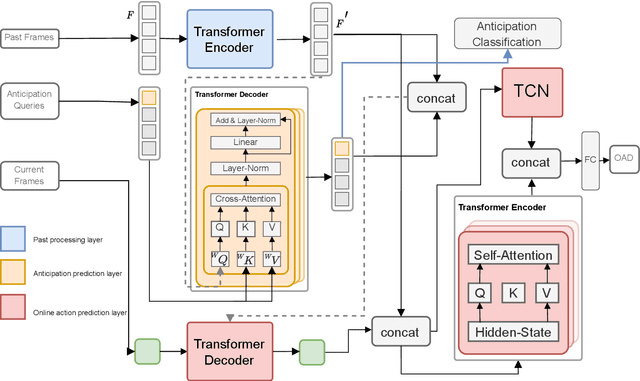
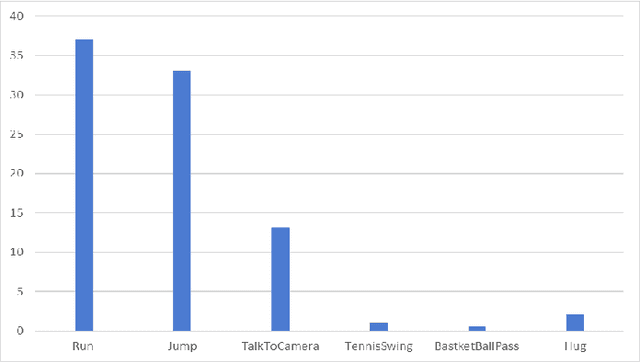
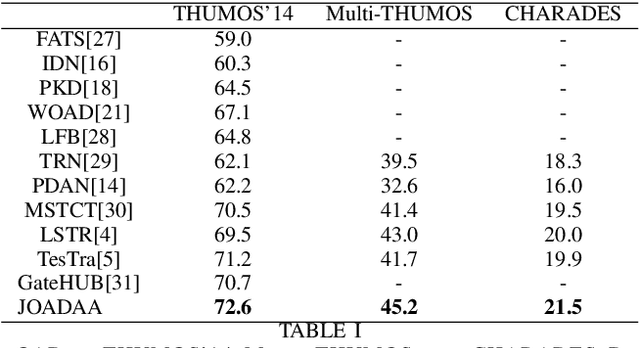
Abstract:Action anticipation involves forecasting future actions by connecting past events to future ones. However, this reasoning ignores the real-life hierarchy of events which is considered to be composed of three main parts: past, present, and future. We argue that considering these three main parts and their dependencies could improve performance. On the other hand, online action detection is the task of predicting actions in a streaming manner. In this case, one has access only to the past and present information. Therefore, in online action detection (OAD) the existing approaches miss semantics or future information which limits their performance. To sum up, for both of these tasks, the complete set of knowledge (past-present-future) is missing, which makes it challenging to infer action dependencies, therefore having low performances. To address this limitation, we propose to fuse both tasks into a single uniform architecture. By combining action anticipation and online action detection, our approach can cover the missing dependencies of future information in online action detection. This method referred to as JOADAA, presents a uniform model that jointly performs action anticipation and online action detection. We validate our proposed model on three challenging datasets: THUMOS'14, which is a sparsely annotated dataset with one action per time step, CHARADES, and Multi-THUMOS, two densely annotated datasets with more complex scenarios. JOADAA achieves SOTA results on these benchmarks for both tasks.
AAN: Attributes-Aware Network for Temporal Action Detection
Sep 01, 2023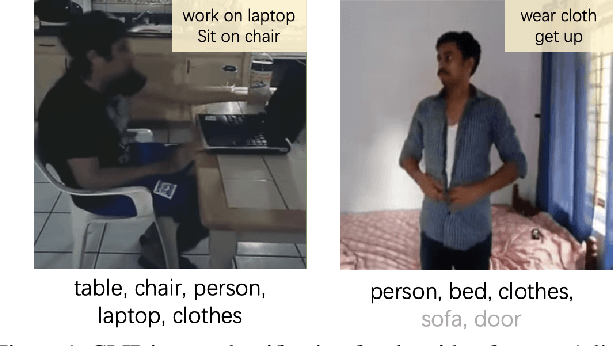
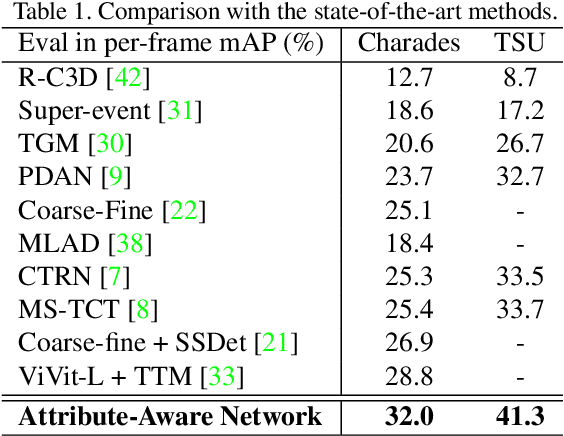


Abstract:The challenge of long-term video understanding remains constrained by the efficient extraction of object semantics and the modelling of their relationships for downstream tasks. Although the CLIP visual features exhibit discriminative properties for various vision tasks, particularly in object encoding, they are suboptimal for long-term video understanding. To address this issue, we present the Attributes-Aware Network (AAN), which consists of two key components: the Attributes Extractor and a Graph Reasoning block. These components facilitate the extraction of object-centric attributes and the modelling of their relationships within the video. By leveraging CLIP features, AAN outperforms state-of-the-art approaches on two popular action detection datasets: Charades and Toyota Smarthome Untrimmed datasets.
 Add to Chrome
Add to Chrome Add to Firefox
Add to Firefox Add to Edge
Add to Edge